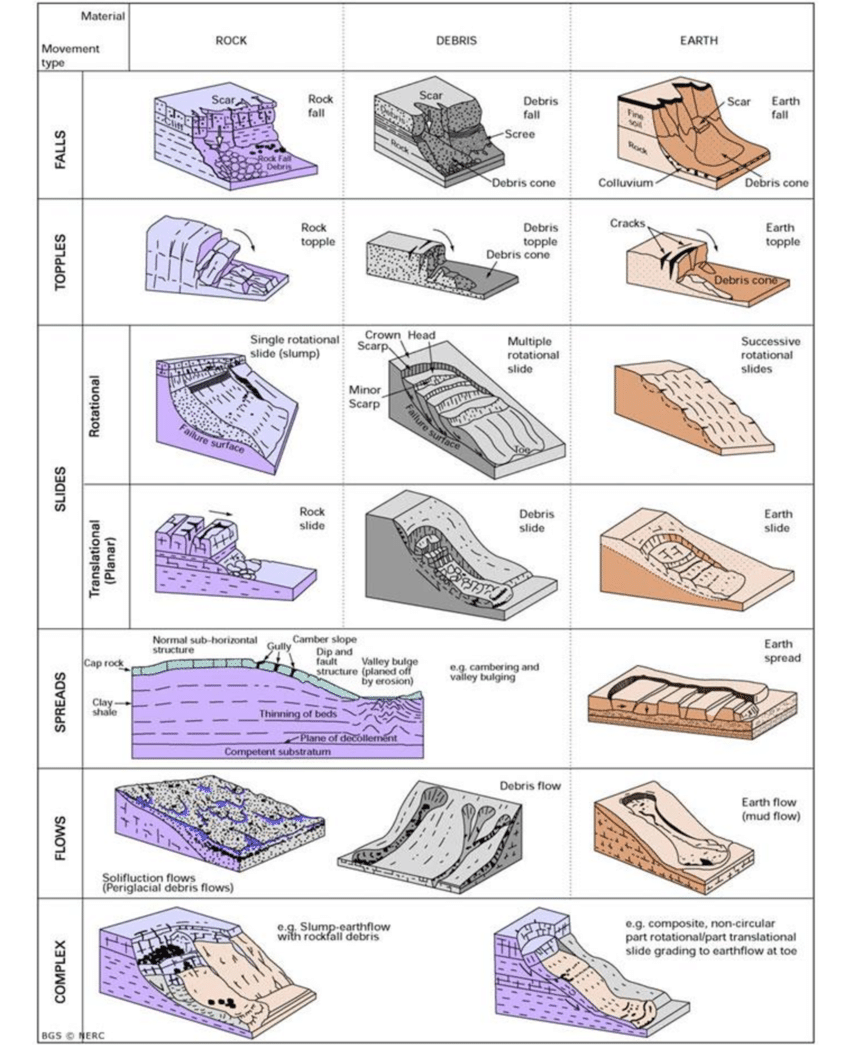There are 700 recorded fatalities in New Zealand, more than from earthquakes and tsunami. These movements of soil, rock and debris down a slope kill on average three people every year in New Zealand, as well as causing significant damage to property and disruption to lives.
New Zealand is tectonically active and temperate, with high annual rainfall, which means the landscape is dynamic and slip-prone. The majority of slips are triggered by rain, although many are triggered by earthquakes and changes in land use. The topography, geology, and climate are the underlying controls on where landslides are most likely to occur.
What are landslides?
Landslides, sometimes called landslips or simply slips, are the downhill movement of soil and rock driven by gravity.
What causes landslides?
It’s important to differentiate between the underlying drivers and triggers. The underlying drivers are loading – mainly gravity, but also earthquakes and sometimes buildings (which destabilises a slope) and soil or rock strength. When the effect of loading overcomes the strength of the soil or rock, the slope will fail.
Triggers, which tip a marginally stable slope into failure, are more varied. They can be split into factors that reduce the strength, those that increase the load, and those that change the geometry of the slope.
Strength reducing factors:
- Groundwater pressure increases (soil or rock strength is directly reduced by pore water pressure). This can be caused by many factors including high rainfall, leaking pipes, melting permafrost, changing climate, and geothermal activity.
- Weathering of the surface materials, often over a prolonged time period.
- Loss of vegetation which may have previously reinforced the slope. This can occur naturally (for example, as the result of fires) or by human activity. This can also have the effect of increasing groundwater pressures as the plants would have abstracted water from the slope.
Load increasing factors
- Earthquakes.
- Buildings, equipment or materials stored at the top of a slope.
- Vibrations from machinery, blasting or construction.
Geometry changing factors
- Erosion of the toe (bottom) of the slope, often by a river or the sea.
- Excavation of the toe as part of construction.
- Placement of unstable fill.
- Volcanic or tectonic activity steepening slopes.
Types of landslides
There are many different forms of landslide. The most common types were classified in 1996 in by Cruden and Varnes.

Assessing landslide risk
Some of the best technical advice available for the assessment of landslide risk is presented in the AGS 2007 guidelines.
Find out more
The following links take you to various research projects underway in New Zealand, or where relevant overseas:
- GNS Science Earthquake-Induced Landscape Dynamics project. This research will develop a framework and tools to allow people to manage the risk to life, property and infrastructure from landslide and other sediment hazards caused by the Kaikōura earthquake and other earthquakes in NZ.
- GNS Science Landslide Reports. Written landslide reports are prepared after every GeoNet landslide response and are available as a series of PDF files.